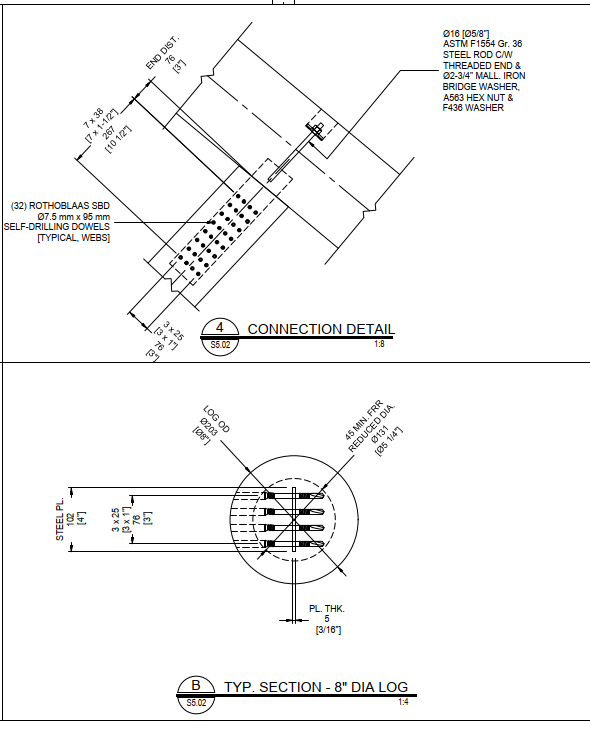Definitely a niche and very complicated. I've had the privilege of designing a few log buildings. General tips:
[ol 1]
[li]I collaborated with the log craftsman. It's truly a craft and the craftsperson's style is likely to drive the truss form.[/li]
[li]I'm in Canada and my wood code (CSA O86) has provisions for round logs found in Section 14 Pole-type Construction. I adopted the physical properties specified there:
[/li]
You wind up getting quite high wood strengths, and as typical with wood, the connections are the challenge.
[li]All-wood connections should be attempted first. The log builder will love you for it, which helps with the collaboration. For relatively low forces and where your webs are primarily in compression, this works really well (mortise and tenon). If you get a wild architect, you might need to look outside this.[/li]
[li]Don't limit yourself to lag screws. The craftspeople who I worked with actually preferred European timber screws and were pretty early adopters of the exotic varieties.[/li]
[li]I found split rings very useful, but only in instances where connections did not require fire resistance. Split rings prescriptively require lags and large washers, which naturally lend themselves to being exposed on the surface.[/li]
[li]If your connections do require fire resistance AND all-wood doesn't do the job, then I feel that you are limited to knife plates and over-driven dowels that lie beyond the char depth. Example below:
[/li]
[li]As is typical with high-force wood connections, you want a large number of small-diameter fasteners in a tight grid. Shear lag is an issue that one ignores at their peril.[/li]
[li]If you're using knife plates, a pro tip is that 3/16" steel plate fits nicely in a standard chainsaw plunge cut.[/li]
[li]Mind your construction tolerances. The craftsman is that and they may be a wizard with a chainsaw, but it's still a chainsaw.[/li]
[/ol]


